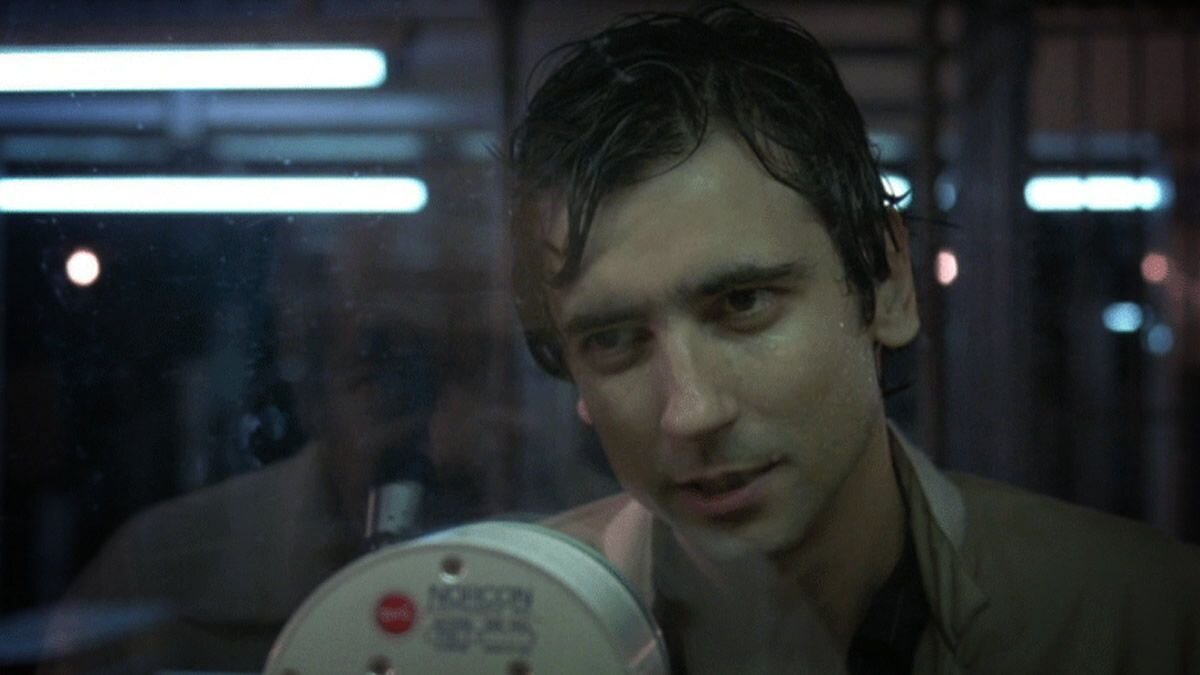AFTER HOURS (1985): THE MARTIN SCORSESE MOVIE YOU NEED TO SEE by Craig Hammill
In 1983, Martin Scorsese was at the end of his rope.
He was growing tired of the increasingly slow, obstacle strewn way Hollywood pictures got made. More painfully, his dream project, The Last Temptation of Christ, had been cancelled by Paramount at the eleventh hour just before he was to start principal photography.
Out of this dispiriting morass, came a movie miracle. Producer Amy Robinson (who had co-starred in Scorsese’s Mean Streets as Teresa) and her producing partner, Griffin Dunne, brought Scorsese an incredibly strange yet hilarious script about a Manhattanite who heads into Soho late at night for a promising date that quickly turns nightmarishly bizarre as Paul finds fate preventing him from returning uptown.
The miracle is that Scorsese said yes. Then partnered with famed Rainer Werner Fassbinder cinematographer Michael Ballhaus (The Marriage of Maria Braun, The Bitter Tears of Petra Von Kant, etc) and rediscovered his cinematic soul.
Shot in 40 days on a very low budget, After Hours paradoxically returned Scorsese to the creative freedom, daring, fire that he’d been missing on some level since Mean Streets.
Scorsese found in Ballhaus a DP who could work fast, never said “it can’t be done” and was always willing to problem solve to get a great shot.
This partnership, along with Scorsese’s career-long collaboration with the brilliant editor Thelma Schoonmaker, would eventually produce Goodfellas, still, for this programmer, the high water mark of Scorsese’s career, and an entire era of filmmaking.
Look at After Hours in many ways as the fascinating sketchbook for the gangster epic that was to come.
If you’ve never seen After Hours, brace yourself for just how brilliantly weird yet well constructed it is. Griffin Dunne’s entitled thirty-something yuppie Paul Hackett, not a bad guy, but not a great guy either, doesn’t travel so much as descend into Soho’s punk rock, indie art, S&M, leather bar world of misfits. He meets an intriguing and beautiful woman named Marcy (a wonderfully uptight, off-kilter Rosanna Arquette) who eventually invites him to hang out with her at midnight at the apartment at which she’s crashing.
But from the moment Paul loses all his cash out the window of a cab on the ride down, we realize Paul is in for a night of really bad luck and bizarre twists of fate.
As Paul tries to extricate himself from what he soon realizes is a really weird situation with Marcy, strange forces of fate like gusts of wind seem to blow Paul perpetually back from his attempts to get back uptown.
You begin to realize that Paul may be in a kind of Purgatory of his own making. While Paul isn’t a horrible person, he is a selfish one. His motivation to be with Marcy was almost certainly to hook up and have sex. When he realizes that Marcy may come with a complicated history, he loses interest quick. From here, each scene finds Paul comically hilariously trying to find a way to get back to his apartment yet always falling into counter-productive decisions and temper tantrums that turn off his would be saviors.
Scorsese tips his Catholic hand when Paul drops to his knees at one point, looks to the sky, (in a great high angle booming down shot) and shouts “What do you want from me?”.
Well Paul. . .maybe accountability.
One feels if Paul had just been honest, up front, and not quite so up tight from the beginning, he wouldn’t necessarily find himself in increasingly bizarre rings of hipster hell.
Scorsese’s lead characters are often far from saints (except when they’re Jesus, the Dali Lama, or long suffering yet steadfast Japanese villagers who remain true to their religious faith). In a way, Scorsese has been making a very long uber-movie across his entire career about the collision of our flawed, imperfect, yet sincere yearning to somehow do right with our bottomless selfishness, narcissism, and pettiness. These two forces are for sure at battle even in computer programmer Paul Hackett.
But for all this high falutin talk, After Hours is a miracle of a movie because its form exhiliratingly supports its content. Scorsese and Ballhaus come up with countlessly inventive shots to tell the story. You can feel Scorsese having a great time when he and Ballhaus pull off a great low angle tracking shot to a diner amidst subway steam and neon light.
And Scorsese reminds here (as he will again in The Wolf of Wall Street) that he’s actually pretty brilliant at a kind of strange nightmarish comedy.
And as always, Scorsese somehow pulls together an incredible cast that give amazing performances. Dunne, Arquette, Linda Fiorentino, John Heard, Teri Garr, Catherine O Hara, Verna Bloom, and Cheech & Chong (!!) all add painfully funny grace notes to this night from hell.
The script is endlessly clever in how characters and objects and plot points keep coming back to bite Paul. And the ending is strangely very satisfying (for a movie that often plays like Kafka’s The Castle in a punk rock club).
So enough already! Check this movie out. It may, like it did for Scorsese, re-ignite your passion for the endless potentials and possibilities of cinema.
Written by Craig Hammill.Founder & Programmer for Secret Movie Club.




